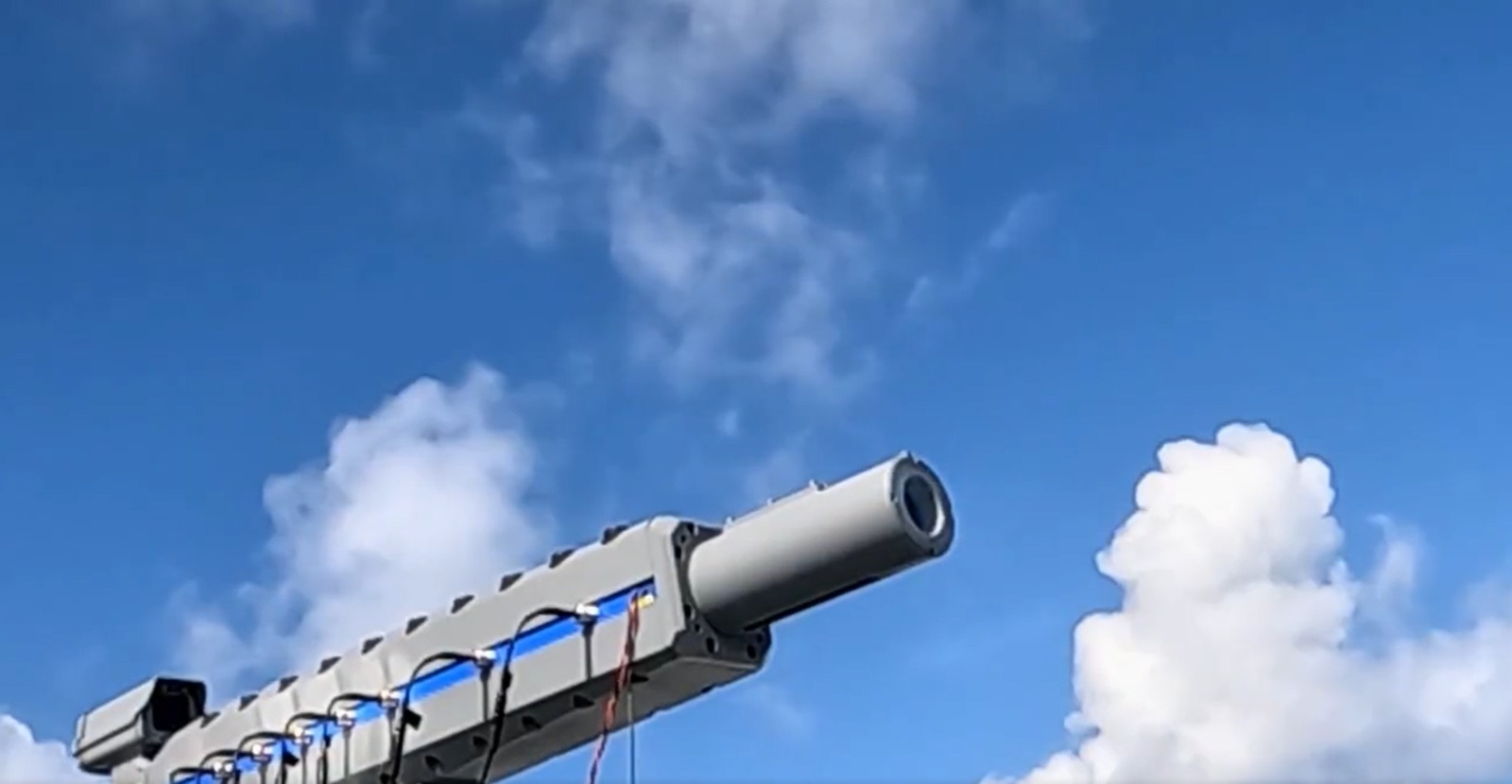After ‘Historic’ Test Of EMG Firepower, Japan To Arm Its 13DDX Destroyers With Electromagnetic Railgun

In October 2023, Japan became the first nation to successfully test-fire a medium-caliber maritime electromagnetic railgun from an offshore platform. Now, the Japan Maritime Self-Defense Force (JMSDF) has begun exploring the possibility of acquiring a new class of destroyers equipped with electromagnetic railguns.
The 13DDX Future Destroyer
The 13DDX future destroyer concept was developed by the Ministry of Defense’s Acquisition, Technology & Logistics Agency (ATLA). After the successful test-firing of electromagnetic railguns, the JMSDF started studying this warship concept, which features these advanced weapons.
In May 2024, Vice Admiral Imayoshi Shinichi, ATLA’s Director General of Naval Systems, unveiled the ambitious plans for the 13DDX at the Combined Naval Event 2024 in Farnborough, UK. During the event, he delivered two briefings on the JMSDF’s future destroyer and submarine projects.
According to a presentation by ATLA at the event, the Future Destroyer (13DDX)—Air Defense Destroyer will be equipped with Rail Guns, Active SAMs, High-Power Lasers, High-speed Maneuvering Target Detection Radar, HPM Weapons, a Fire Control Network, IPES (Downsizing Large-Capacity GEN), AI-based CDS, Autonomous Navigation, Automated Damage Control, and Flexibility by Mission Modules.
The 13DDX will also feature directed energy weapon (DEW) systems and a new type of multifunction radar optimized to detect high-speed targets. It will inherit some features from the JMSDF’s Asahi-class destroyers and Mogami-class frigates.
Electromagnetic Railgun: A Game-Changing Weapon
In early 2022, the Japanese Ministry of Defense announced its decision to develop an electromagnetic weapon system to intercept hostile hypersonic missiles. Last year, ATLA, a division of the MoD, announced the successful testing of this system, claiming it as the first maritime railgun test ever conducted, given that railguns are typically mounted on ships.
A railgun is an electromagnetic weapon capable of firing projectiles at approximately Mach 7, or seven times the speed of sound, targeting ships, missiles, and aircraft. Unlike conventional guns, railguns do not use gunpowder or other explosive propellants and require minimal cleaning or unjamming.
Theoretically, a railgun could fire a projectile the size of a bowling ball fast enough to destroy a small building, even over long distances. Due to the substantial power supply required, railguns are typically large and not portable. There have been proposals to adapt this technology for non-weapon purposes, such as launching aircraft and spacecraft, as well as specialized tools.
ATLA’s Railgun Specifications
While details about ATLA’s railgun are limited, the current specifications for the medium-sized electromagnetic railgun prototype, first spotted in May of this year, highlight its capability to shoot 320g (0.7lb) 40mm steel rounds.
According to a report published in Shephard Media, the ATLA railgun utilizes five megajoules (MJ), or five million joules (J), of charge energy, enabling it to fire bullets at a speed of around 2,230m/s (Mach 6.5). ATLA aims to eventually have the railgun operate on 20 MJ of charge energy.
Strategic Deployment
Japan plans to deploy the railgun both on land and at sea. Initially, the addition of the Aegis Ashore land-based system to Japan’s arsenal, which includes Aegis destroyers and the Patriot Advanced Capability-3 (PAC-3) ground-based system, was meant to enhance ballistic missile interception capabilities. However, the Japanese government abandoned this plan in 2020.
The development and testing of these railguns come as Tokyo seeks effective measures to counter the threat posed by hypersonic weapons developed by regional adversaries such as China, North Korea, and Russia.
In a media interview, Admiral Shinichi stated, “Given the increasingly challenging security environments surrounding Japan and the growing anti-access/area denial (A2/AD) capabilities of other countries, our challenge is to enhance our long-range air defense capabilities to counter these threats.” He is also in charge of R&D, ship design, and defense equipment.
Consequently, the JMSDF and ATLA have decided to incorporate electromagnetic railguns into the 13DDX Future Destroyer. This decision is crucial, given that the development of long-range missiles by regional adversaries puts Japanese destroyers at significant risk.

Regional Competition
But why the rush to develop such formidable firepower? The answer lies in East Asia’s increasingly tense geopolitical landscape.
In May 2024, Japan entered into a railgun cooperation agreement with France and Germany to jointly explore railgun technology and aim for the early deployment of this advanced capability.
During the same month, China experienced a setback in its electromagnetic hypersonic railgun testing. The Chinese navy conducted a test firing of an electromagnetic railgun, launching a precision-guided munition into the stratosphere at hypersonic speeds.
This involved launching a smart bomb to an altitude of 15 kilometers, achieving speeds exceeding Mach 5, or five times the speed of sound. While the initial launch success initially sparked enthusiasm, the overall outcome of the experiment was deemed unsuccessful.
What’s Next?
With the possibility of future conflicts in mind, Japan is bolstering its defense capabilities and enhancing military readiness.
Some Japanese officials have long predicted that the country aims to combine its railgun system with long-range missiles to improve its ability to intercept aerial targets.
Japan’s railgun ambitions don’t stop at sea. There are plans to mount these electromagnetic marvels on land-based trucks, creating a mobile defense network capable of intercepting hypersonic missiles.
As tensions escalate in the Indo-Pacific region, many eyes will be focused on Japan’s naval transformation. The development of the 13DDX and its electromagnetic railgun technology signals a new era in naval warfare, with Japan positioning itself at the forefront of this revolution.
- Questions and Answers
- Opinion
- Motivational and Inspiring Story
- Technology
- Live and Let live
- Focus
- Geopolitics
- Military-Arms/Equipment
- Beveiliging
- Economy
- Beasts of Nations
- Machine Tools-The “Mother Industry”
- Art
- Causes
- Crafts
- Dance
- Drinks
- Film/Movie
- Fitness
- Food
- Spellen
- Gardening
- Health
- Home
- Literature
- Music
- Networking
- Other
- Party
- Religion
- Shopping
- Sports
- Theater
- Health and Wellness
- News
- Culture

